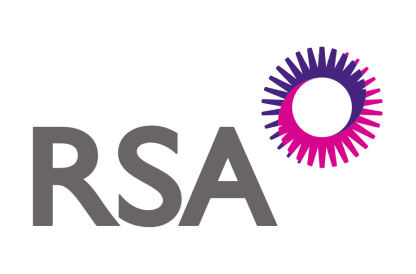 RSA Insurance Group
RSA Insurance Group
Global insurance firm accelerates team onboarding and reduces performance testing time by 30% with OpenText™ Core Performance Engineering

About RSA Insurance Group

Summary
Challenges
- Performance testing is always subject to cost and time pressures.
- Test scripts took too long to create, making it hard to hit deadlines.
- Onboarding and training were too slow.
Solution
- Established a standard testing framework.
- Managed multiple protocols within one tool.
- Simplified performance testing.
Results
Cut performance testing time by 30%
Accelerated onboarding and upskilling
Reduced time spent on scripting
Challenges
- Deadlines for completing performance testing are always tight
- Performance testing team was under pressure to reduce costs
- Test scripts were taking too long to create, making it difficult to hit deadlines
- Onboarding and training was time-consuming for new performance testers
RSA Insurance Group (RSA) develops and maintains a number of internal (employee-facing) and external (customer-facing) applications. It is vital for the company to ensure that these applications not only fulfill their functional roles in a secure way but also perform as well as possible. For internal applications, good performance is a key contributor to efficiency and productivity, while externally it is strongly correlated with high levels of customer satisfaction and loyalty.
At RSA, performance testing typically takes place near the end of the software testing lifecycle, which means the team is under significant pressure to execute and report on its activities in a timely manner. Cost is another constant challenge.
Donald Stewart, performance test engineering lead at RSA Insurance Group, said, “We're always squeezed with regard to timing. In addition, we need to control the costs of configuring and running our performance testing environment. We must test multiple applications using multiple protocols, which calls for a toolset with very broad capabilities.”
Previously, the performance testing team committed significant time and effort to scripting tests. It was not unusual for a script to contain more than a thousand lines of code. This increased the number of potential points of failure and thus the risk of delays in testing. A related challenge was ensuring that the entire team had sufficient skills around scripting.
“Particularly for newer members of our offshore teams, it was a struggle given short timeframes to give people the skills to understand the scripting process and follow the logical flow of each script,” said Stewart. “There are always failures within any given test, and you need the ability to understand where things have gone wrong. Otherwise, you’re not really performance testing, you’re just going through a box-ticking exercise.”

We need a tool that can cope with our broad mix of multi-protocol systems, and OpenText Core Performance Engineering does that well.
Solution
To accelerate performance testing, enable faster onboarding, and increase productivity, RSA established a single standard testing framework built around OpenText™ Core Performance Engineering (LoadRunner Cloud).
Products deployed
-
OpenText™ Core Performance Engineering
OpenText Core Performance Engineering makes it easy to plan, run, and scale performance tests without the need to deploy and manage infrastructure
-
OpenText™ Professional Performance Engineering
OpenText Professional Performance Engineering simplifies performance load testing for co-located teams. With project-based capabilities, your teams can quickly identify abnormal application behavior
Establishing a standard framework
RSA set up a single standard testing framework for use by all teams, both on- and offshore. This framework was standardized on OpenText Core Performance Engineering and OpenText™ Professional Performance Engineering (LoadRunner Professional) solutions for performance testing. These tools support the full scope of activities from scripting to execution to reporting on test scenarios.
“We brought together all the guardrails and processes for functional, non-functional, and cyber testing within this single framework, which we now manage within our Test Center of Excellence team,” said Stewart. “We are embedding new best practices every two weeks and making sure that all teams within the group understand the importance of following the protocols laid down in the framework.”
Managing multiple protocols within one tool
One of the key factors in RSA’s selection of OpenText Core Performance Engineering and OpenText Professional Performance Engineering as its standard performance testing tools is their support for a large number of protocols: 50+ and continuing to grow.
“We need a tool that can cope with our broad mix of multi-protocol systems, and OpenText Core Performance Engineering does that well,” said Stewart. “That’s not always the case with alternative systems, particularly open-source options. Also, in the insurance industry, security is of the utmost importance, because we're dealing with people's lives and their money. With open source, there is a possibility that something could be slipped into the code.”
He added, "The other advantage of an enterprise-class tool like OpenText Core Performance Engineering is round-the-clock access to professional support. I need to be sure that performance tests can be executed on time, which means I need the rapid response and resolution from OpenText if anything goes wrong.”
Simplifying performance testing
Using the OpenText TruClient tool in VuGen is helping RSA accelerate team member onboarding and solve its previous issues around access to skills. With TruClient, non-specialists can record a flow of application interactions without needing to know scripting or the underlying engine.
“Having TruClient makes it easier for our entry-level performance testers to actually utilize the application,” said Stewart. “Not everyone we bring onto the team already has the full skillset required to be a performance tester, and TruClient is a great way to start learning the ropes.”

OpenText Core Performance Engineering enables our offshore teams to access the application under test through the cloud, which is a major boon in cost and convenience.
Results
OpenText Core Performance Engineering solutions are helping RSA reduce time-to-market for high-quality applications, cut the costs of performance testing, increase the efficiency of testers, and accelerate the onboarding and upskilling of new team-members.
Cut performance testing time by 30%
“With OpenText Core Performance Engineering, we’re saving at least 30% in performance testing time,” commented Stewart. “What’s more, OpenText Core Performance Engineering enables our offshore teams to access the application under test through the cloud, which is a major boon in cost and convenience.”
OpenText Core Performance Engineering enables RSA to spin up load generators in different global regions and execute tests. This also saves time that was previously spent on configuring and hosting test environments.
“We’ve already reduced the time to market considerably, and with the single test framework and best practices embodied in our OpenText toolset we aim to reduce that still further,” said Stewart.
Accelerated onboarding and upskilling
Using TruClient increases the speed at which RSA can onboard new performance testers. It also enables people to become productive team members much faster than with a conventional script-based tool.
“TruClient is an event-driven solution, so if a user clicks on a link, that's what gets rendered and consumed as a resource and subsequently displayed, and therefore it's clear and easy for the tester to verify,” said Stewart. “And because it’s a low-code or even no-code approach, the tester doesn’t require as deep a skillset as they might with other enterprise tools.”
Reduced time spent on scripting
RSA performance testers now spend less time on scripting and can devote more attention to executing and reporting on tests. Overall, the organization maintains fewer, shorter scripts, saving time and effort.
“For web-based scripting, TruClient really comes into its own,” concluded Stewart. “And because we let the browser handle the correlation, we don’t have scripts failing because the parameters were incorrect. That means we cut the error rate by 40%.”